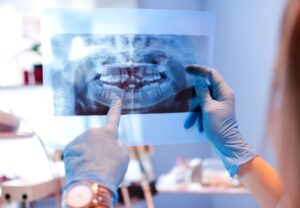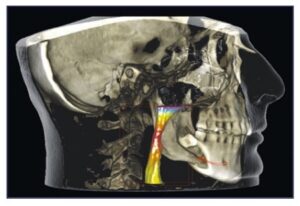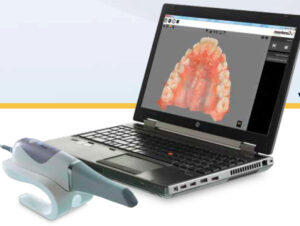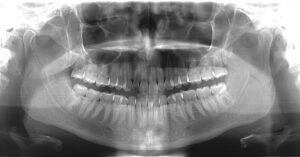Header logo
header top contact widget
LANAP
Dental Implants Done To Perfection!
Posted on Jul 23, 2024 by William J. Claiborne, DDS MS
In our Western NC periodontal dental office, we see many patients who are contemplating tooth replacement through dental implants. This can be a complex decision, as today’s implant dentistry offers many choices that are important to achieving a desirable outcome.
This is why accurate, personalized information is best left to a credible, knowledgable source. As a periodontal dental specialist for over 30 years, I have advanced training in all types of dental implants as well as the procedures that may be needed to ensure your investment brings lasting satisfaction.
Over the years, I’ve found that many patients have misconceptions when it comes to dental implants. My desire is to help to dispel the incorrect information so each individual understands the realities when it comes to dental implants.
There are over 40 different implant systems, each designed to accommodate various needs and goals. For example, one consideration in determining which type of dental implant is recommended is in the amount of jaw bone mass.
An implant needs a particular amount of bone structure to support it. After several years of missing tooth roots, the bone begins to decline in mass. For people who wear a denture or partial, the pressure of wearing these appliances can actually speed up the rate bone loss.
So, depending on the amount of bone present to support the implant(s), the choice of which implant system to recommend can be made. For some, we may recommend a bone rebuilding process prior to implant placement. Or, we may advise an implant that uses unique implant lengths and placement angles (the “All-On-4”) that can overcome the challenges of bone loss.
There are also many considerations in selecting the right type of dental implant. The final choice, of course, is the patient’s preference. Does he or she want an implant that is non-removable (“fixed”)? Is cost the determining factor? Does the patient need just one implant or several? Can one implant support a “bridge” of teeth in one area? And so on.
These are just some of the factors we take into consideration when discussing dental implants with patients. It is in our experienced, skilled hands that we recommend one system over another. What’s online or from opinions of others may create confusion and even dissuade you from pursing this ideal option to replace missing teeth.
One misconception is that dental implants are more expensive than other tooth replacement options (dentures, partials, crown-&-bridge). However, they are actually a bargain when all areas are considered. Dental implants do not rely on the support of neighboring teeth. This means that crowning otherwise healthy, natural teeth is not necessary.
The investment made in dental implants is a wise one. Dental implants have one of the highest of all success rates of any implant-in-bone procedure (such as hips, knees), up to 98 percent. Made of titanium, this metal successfully bonds with living bone. This means the bone will grow around your implant(s), integrating it into your bone mass to restore dependability and stability.
Being implanted into the jaw bone, dental implants also restore stimulation that reduces risks for further bone loss. This halts bone shrinkage so you avoid problems associated with resorption. These include an aged facial appearance (such as deep wrinkles around the mouth and formation of jowls), a weakened jaw bone, and the higher risks for continued tooth loss.
Some people also assume that an implant is needed for each missing tooth. That’s not the case for many of our implant patients. The implanted portion of a dental implant can often support two teeth or a bridge of several teeth. When 4 – 8 implants are strategically placed, they may be able to support a full arch of teeth, which often includes non-removable types.
To optimize dental implant success, we have specialized skills to incorporate the more-complex procedures involved in implant placement. For example, a periodontist can incorporate bone rebuilding procedures into treatment to a proper depth. This specialist can also help to restore bone that has occurred in the mandible (lower jaw) or maxilla (upper jaw), which may also require a sinus lift.
In our Asheville periodontal dental office, we offer implant diagnosis (using the benefits of advanced technology) for placement with the pre surgical advantages of achieving optimal oral health. Here, we feature some of the most advanced imaging and computerized technology available in the industry. Those specific to dental implant diagnosis and placement include:
LANAP Protocol Using PerioLase MVP-7: Efficiently and effectively treats periodontitis (advanced gum disease) with laser technology. It causes very little discomfort and has a quick recovery time. This has also been found to stimulate bone regrowth in damaged areas.
Dental Radiology With 3-D Cone Beam Technology: This imaging is ideal for diagnosis and treatment planning. The imaging covers the entire dentition area with clear views of the mandible and maxilla (upper and lower jaw).
Simplant Dental Software for Computerized Dental Implant Placement: This system helps in pre-surgical positioning of dental implants on the computer, using a 3D model of the patient’s jaw. This aids in the selection of the implant type that ensures a precision fit.
These technologies help to optimize patient comfort and treatment success as well as minimize treatment, meaning that patients are never over-treated. Too, healing time is typically reduced, thanks to these specialized measures.
Additionally, we make patient comfort a high priority. We are known for making patient comfort a high priority in all procedures. In addition to many measures of creating a comfortable visit, we offer Oral and IV sedation (“twilight sleep”). Both are safely administered by highly qualified medical professionals who use advanced safety monitoring equipment.
Dental implants are the next best thing to natural teeth. They feel like “real” teeth, look beautiful, and restore a confident, comfortable ability to bite and chew. If you have thought about replacing missing teeth or are frustrated with a denture or partial, call 828-274-9440 to arrange an appointment.
When it comes to your smile, be an informed consumer and avoid hype or misguidance. In one visit, I feel we can help you understand how the selection of a periodontist can be your first step in a successful outcome and a smile you’ll love to share!
Dental Implants Gaining Ground In Tooth Replacement Preferences
Posted on Jun 20, 2024 by William J. Claiborne, DDS MS
For adults who have lost natural teeth, I have good news and bad news. Let’s get the bad news out of the way first…
Missing natural teeth, whether replaced by a full denture, partial denture, bridge, or not being replaced at all, can lead to problems that impact your oral health, even the lifespan of remaining natural teeth. I’ll address those problems further on, but let’s move on to some good news.
According to the National Institutes of Health & Nutrition Examination, by 2026 nearly 23% of adults are estimated to opt for dental implants as their choice to replace teeth.
https://www.ncbi.nlm.nih.gov/pmc/articles/PMC6854267/
This is great news for our rapidly aging population. Dental implants come with a number of advantages that effect overall health. These include:
• The ability to bite and chew food thoroughly, aiding digestion. It has been found that people who wear dentures take more medications and have more gastro-intestinal problems.
• Eating comfort so a diet of fibrous and healthy food choices can provide sufficient vitamins, minerals and protein.
• Confidence in social situations, which (according to an article by the Mayo Clinic News Report): “Socializing not only staves off feelings of loneliness, but also it helps sharpen memory and cognitive skills, increases your sense of happiness and well-being, and may even help you live longer.”
• Helping to support remaining natural teeth by preserving jaw bone mass. When a tooth root is removed from the jaw bone where it was once supported, a process known as resorption begins. Once underway, it continues at an ever-increasing pace, accelerating with each passing year. As the bone shrinks, adjacent teeth are subject to movement and root damage. On average, the next teeth you’ll most likely lose are those bordering areas of missing teeth.
Since the mid to late-60’s, dental implants have been fine-tuned and perfected. Today, there are nearly 40 different types of dental implants. These systems are designed to accommodate specific needs and goals.
For instance, using just 4 or 6 implants placed at unique angles, the All on 4 Dental Implant system is able to evenly distribute the forces of biting and chewing in minimal bone. This is ideal for people who have experienced severe bone loss, helping them avoid the need for bone rebuilding procedures.
With all the great reasons to replace missing teeth with dental implants, an important decision in having a successful outcome is in who places your implants.
Although some generalists take courses in dental implant placement, many of these are offered by the manufacturers of particular implant systems. Thus, these courses primarily focus on the implant available through this one company, which may not be the most ideal choice for your specific needs.
This is why many dentists refer the placement portion of implants to a periodontal specialist. A periodontist has advanced training and skills in the diagnosis and placement of all types of dental implants. This means that this dental specialist can determine which implant system will work best for your individual needs.
Another benefit of a periodontist’s skills for implant patients is in their ability to conduct additional procedures, such as a sinus lift, needed in treatment. This ensures the patient’s implant(s) are positioned in the proper bone mass at a healthy depth so it does not pose risks to surrounding structures.
As a specialist in treating all stages of gum disease, a periodontist is also able to help optimize your gum health prior to implant placement. By pretreating any periodontal inflammation, the implant has a healthy foundation from the very beginning.
In our Western NC periodontal dental office, we incorporate the advantages of some of the most advanced technology in dentistry; many of these options which are not readily available in other dental offices in our region. These computerized marvels offer advantages to patients in helping to minimize treatment needs, speed healing, and optimize comfort.
These include laser dentistry, Cone Beam imaging, Cone Beam computerized tomography imaging, intraoral scanning, and computerized dental implant placement.
Additionally, in our Asheville periodontal dental office, we offer oral and IV sedation (“twilight sleep”) for optimal comfort. Both have an amnesiac effect, leaving most with little or no memory of treatment afterward. Here, anesthesia is overseen by a Medical Doctor (MD) who is a board certified Anesthesiologist. With both sedation options, patients are closely monitored with advanced safety equipment throughout treatment.
If you’ve considered dental implants, take the first step to a new you today! Begin by calling our Asheville periodontal dental office to speak with a friendly staff member at: 828-274-9440.
If the cost of dental implants has prevented you from choosing this optimal tooth replacement option, most of our payment plans require no down payment, are interest-free, and have no prepayment penalty. Feel free to ask about those during a consultation.
What Can A Periodontist Do For You?
Posted on May 13, 2024 by William J. Claiborne, DDS MS
In meeting someone for the first time, a common question is “What do you do?” Telling them that I am a periodontist often gets followed by another question: “What does a periodontist do?” The long version, according to the American Academy of Periodontology, is:
“A periodontist is a dentist who specializes in the prevention, diagnosis, and treatment of periodontal disease, and in the placement of dental implants. Periodontists are also experts in the treatment of oral inflammation. Periodontists receive extensive training in these areas, including three additional years of education beyond dental school. They are familiar with the latest techniques for diagnosing and treating periodontal disease, and are also trained in performing cosmetic periodontal procedures.”
Choosing this dental specialty is achieved by an understanding that it will require many years of education. A periodontist begins by completing 4 years of college (undergraduate training) followed by another 4 years in dental school to earn a doctorate. The periodontal specialty then requires another 3-4 years before completing the stringent requirements for a specialty certification in periodontics.
What can all of this in-depth education and advanced skill level do for you?
Let’s begin with the diagnosis and treatment of all stages of periodontal (gum) disease. According to the Centers of Disease Control & Prevention (CDC), it is estimated that over 47% of Americans have some level of gum disease, which is also the leading cause of tooth loss. That’s nearly half of our population.
In addition to a healthy smile, the health of your gums can impact your overall health. By keeping the bacteria of advanced gum disease, known as periodontitis, you lower your risks of a long list of serious health problems that have been shown connected to gum disease bacteria. These include heart disease, stroke, diabetes, arthritis, Alzheimer’s disease, some cancers, preterm babies, and erectile dysfunction (ED).
A periodontal specialist is also a leading choice in the selection and placement of dental implants. With specialized skills, a periodontist is especially respectful to oral tissues as sensitive layers that have an important role in the appearance of a smile and the health of teeth. Utilizing these skills, a periodontist can help to minimize incisions while effectively treating each area in the mouth.
When it comes to the selection of the implant system best for you, our speciality also understands the complete spectrum of all implant types. Some implant systems offer a non-removable (“fixed”) option with others functioning with removable teeth.
Proper selection of your dental implants can also help to keep treatment fees to a minimum. This is because some implants can support more than one tooth and others are designed to support a full arch of replacement teeth. Because treatment fees are based on the number of implants required, your tooth replacement goals may be within a more manageable budget with fewer implants needed to accomplish your goals.
Reshaping gum tissues is also part of our specialized skills. The gum tissues are designed to provide a tight seal around the base of teeth and block bacterial entry to the sensitive tooth root area. When oral bacteria are able to penetrate beneath the gum line, they can cause inflammation to tender gums and attack the structures that support natural teeth.
In a procedure known as a gingivectomy, we are able to reposition or graft gum tissues over the area of recession to restore a healthy seal and protect the tooth structures below the surface.
In some cases, we are also able to save a natural tooth when the tooth breaks near the gum line. In a procedure known as crown lengthening, a periodontist can sometimes expose enough of the tooth structure for the placement of a crown. By preventing the need for the tooth’s removal, the patient is able to avoid the extensive costs and potential upkeep of replacing it.
When it comes to a smile’s appearance, a periodontist is also the go-to. In smiles that have an uneven line of gum tissues, meaning that some teeth have more gum showing than others. This up-and-down line of gum tissue creates a jumbled look. Crown lengthening can alter the height of these tissues prior to placement of a crown (‘cap’) to provide a more flattering smile line.
Another benefit of the skills of gum recontouring are the correction of a “gummy smile.” In this, the patient has too much gum tissue bordering the tops of teeth, making the smile line unbalanced. Using the gingivectomy procedure, a periodontist can lower the height of gum tissues, which is generally followed by placement of crowns.
Here, our Western North Carolina periodontal dental office features some of the most advanced technology in dentistry. Many of these features are not available in other dental offices elsewhere. Some of these include:
LANAP With PerioLase MVP 7 (Laser-Assisted New Attachment Procedure) – an advanced protocol that efficiently and effectively treats advanced gum disease with the added advantages of a dental laser. This offers a non-surgical alternative for patients with moderate to severe periodontal disease. LANAP treatment has also been found to stimulate bone regrowth in damaged areas.
3-D Cone Beam Imaging – used for diagnoses and treatment planning, giving clear views of the upper and lower jaw, used for intricate review of sagittal, axial, and coronal planes, locating and tracking nerve canals optimizes implant placement.
CareStream Cone Beam Computer Tomography Imaging – provides enhanced tomography that interacts with 3D imaging for exceptional detail and range.
CS 3600 Intraoral Scanner – This scanner quickly and comfortably captures digital impressions without the need for bulky, goopy trays! Through this process, we are able to create precision models or appliances (crowns, inlays, onlays, bridges, orthodontic appliances and aligners, custom abutments). The scanner can also reach difficult–to–access areas in the patient’s mouth for superior results with improved patient comfort.
Computerized Dental Implant Placement – allows for pre-surgical positioning of dental implants using a 3D model of the patient’s jaw. Once the implant type is selected, a template is developed for optimal treatment success, even for complex cases.
Sedation Dentistry – When dental fear or anxiety causes people to delay or avoid having dental treatment, we offer oral or IV sedation. Oral sedation is a pill that helps patients relax. It also has an amnesiac effect, leaving most with little or no memory of treatment afterward. I.V. sedation (also known as “twilight sleep”) places the patient in a deeper sleep state and erases memory of the procedure.
Through our extensive menu of treatments offered, it’s easy to see that our main goal is to provide patients with a comfortable and positive experience within our specialized skills. We believe this helps patients truly appreciate the advantages of a healthy smile and understand how our involvement can create a healthier, more confident individual.
I also feel it’s important that people are aware of the signs and symptoms of periodontal disease, which are:
• Red, swollen or tender gums
• Seeing blood in the sink when brushing
• Receded gums
• Loose or separating teeth
• Pus pockets on gum tissues
• Sores in the mouth
• Persistent bad breath
If any of these are present, please know that the condition will only worsen without treatment. And, early treatment can minimize treatment needs and costs.
Call 828-274-9440 if you have questions or wish to arrange a consultation discuss your individual needs (or those of a smile you love!). Our Asheville periodontal dental office staff will be happy to help you!
What You May Be Doing To Increase Potential For Gum Disease
Posted on Apr 11, 2024 by William J. Claiborne, DDS MS
There’s a saying: “We don’t know what we don’t know.”
That applies to so much in life. With all good intentions, adults go about their days feeling they are doing what is right. However, we occasionally learn that what we thought was right is to our detriment.
For example, decades ago, people felt that rigorous scrubbing of teeth with a hard toothbrush and baking soda was a good way to clean your teeth. We now know that the hard bristles and abrasive substances can wear down tooth enamel and scrub away tender gum tissues.
And, there are ways that we actually – and unconsciously – add to the risks for developing periodontal disease.
Over the years, research has continuously shown that the bacteria of periodontal disease can have a number of harmful effects – in the mouth and further. Because these inflammatory bacteria can enter the bloodstream and travel throughout the body, research has shown that they can activate or worsen a number of serious health problems. These include:
– heart disease
– stroke
– Alzheimer’s disease and dementia
– arthritis
– diabetes
– preterm babies
– erectile dysfunction (ED)
– some cancers (including lung and pancreatic)
– obesity
Signs of gum disease include bleeding or sore gums, persistent bad breath, receded gums, and/or gums that are red rather than a healthy pink. These are warning signs since gum disease will only worsen without treatment.
As gum disease progresses, gums begin to pull away from the base of teeth, gums become very tender and bleed easily when brushing, pus pockets form on gums and teeth may shift or loosen.
Unfortunately, gum disease is ignored too often by adults in the U.S. The CDC estimates that over 47% of Americans have some level of gum disease, which is also the leading cause of tooth loss.
Bacterial overload can leave the body’s natural defense response, white blood cells, unable to conquer the infection. Thus, bacteria overload in the mouth triggers an inflammatory reaction begins, which is the beginning of gum disease.
Below are things that can increase the risk for gum disease, some of which you may not realize are contributors:
Aging: Studies have indicated that the incidence of periodontal disease increases as we get older. Over 70% of adults who are aged 65 and older have some form of gum disease.
Some Existing Health Problems: People who have diseases such as cancer or heart problems already have weaker immune systems. When the bacteria of gum disease enter the bloodstream through tears in oral tissues, harmful clotting factors and proteins can occur elsewhere in the body. Research has linked gum disease bacteria with heart disease, diabetes, stroke, preterm babies, and memory loss.
Dry Mouth: Smoking, certain medications, drinking alcohol and aging all contribute to a dry mouth. The saliva in your mouth plays an important part in removing food particles and bacteria. When insufficient saliva cannot cleanse the mouth adequately, bacteria buildup results.
Stress: It has been proven that people who endure long-term stress have a greater risk for developing diseases such as cancer, hypertension and even gum disease. Stress takes a toll on the body’s entire operation, weakening its ability to fight infection.
Medications: The side effects of some drugs can dry out oral tissues and even weaken the density of bones, opening the door for gum disease. Like your physician, your dentist should have an up-to-date list of all medications you take, including herbal supplements.
Grinding Teeth: When you grind and clench your teeth during sleep, the teeth wear down and connective oral tissues are weakened. When the tissues surrounding your teeth are vulnerable, your entire jaw bone area is exposed to certain infections, which can lead to gum disease.
Genetics: Because of genetics, you can be predisposed to develop gum disease. Research indicates that 30% of the population may be genetically susceptible to gum disease.
Gender: Periodontal disease occurs more in men than women (56% vs. 38%).
Smoking: Smoking dries out the tissues in the mouth, increasing one’s susceptibility to calculus. Research shows that smokers lose more teeth than nonsmokers and typically require longer healing times after treatment with results that are less predictable.
A periodontist is a specialist in the treatment of all stages of gum disease and in the placement of dental implants. He or she is the expert who can help to restore a bacteria-burdened “oral cavity” to a healthy state.

Dr. William Claiborne,
Biltmore Periodontics
In our Asheville periodontal dental office, we feature some of the most advanced technology in the industry. The patient benefits from these through diagnoses that are exact, more conservative treatment, and having reduced healing time. This also can mean there is less discomfort.
One of the features we provide is the LANAP Protocol Using Periolase MVP-7. LANAP (an acronym for Laser-Assisted New Attachment Procedure) is amazing technology that more efficiently and effectively treats periodontitis (advanced gum disease) with the PerioLase® MVP-7™ laser. As a minimally invasive (non-surgical) treatment for moderate to severe periodontal disease, LANAP has even been found to stimulate bone regrowth in damaged areas.
If you are experiencing symptoms of gum disease, call 828-274-9440. In our state-of-the-art Asheville periodontal dental office, our patients are treated with respect, compassion and a gentle touch. New patients are always welcome.
If dental fear has kept you from having regular dental care and you’re experiencing symptoms of gum disease, consider starting with a consultation. During this time, we can discuss comfort options, including oral and IV sedation (“twilight sleep”). Referrals are not required.
Recent Posts
Categories
Archives
- September 2024
- August 2024
- July 2024
- June 2024
- May 2024
- April 2024
- March 2024
- February 2024
- January 2024
- December 2023
- November 2023
- October 2023
- September 2023
- August 2023
- July 2023
- June 2023
- May 2023
- April 2023
- March 2023
- February 2023
- January 2023
- December 2022
- November 2022
- October 2022
- September 2022
- August 2022
- July 2022
- June 2022
- May 2022
- April 2022
- March 2022
- February 2022
- January 2022
- December 2021
- November 2021
- October 2021
- September 2021
- August 2021
- July 2021
- June 2021
- May 2021
- April 2021
- March 2021
- February 2021
- January 2021
- December 2020
- November 2020
- October 2020
- September 2020
- August 2020
- July 2020
- June 2020
- May 2020
- April 2020
- March 2020
- February 2020
- January 2020
- December 2019
- November 2019
- October 2019
- September 2019
- August 2019
- July 2019
- June 2019
- May 2019
- April 2019
- March 2019
- February 2019
- January 2019
- December 2018
- November 2018
- October 2018
- September 2018
- August 2018
- July 2018
- June 2018
- May 2018
- April 2018
- March 2018
- February 2018
- January 2018
- December 2017
- November 2017
- October 2017
- September 2017
- August 2017
- July 2017
- June 2017
- May 2017
- April 2017
- March 2017
- February 2017
- January 2017
- December 2016
- November 2016
- October 2016
- September 2016
- August 2016
- July 2016
- June 2016
- May 2016
- April 2016
- March 2016
- February 2016
- January 2016
- December 2015
- November 2015
- October 2015
- September 2015
- August 2015
- July 2015
- June 2015
- May 2015
- April 2015
- March 2015
- February 2015
- January 2015
- December 2014
- November 2014
- October 2014
- September 2014
- August 2014
- July 2014
- June 2014
- May 2014
- April 2014
- March 2014
- February 2014
- January 2014
- December 2013
- November 2013
- October 2013
- September 2013
- August 2013
- July 2013
- June 2013
- May 2013
- April 2013
- March 2013
- February 2013
- January 2013
- December 2012
- November 2012
- October 2012
- September 2012
- August 2012
- July 2012
- June 2012


